Description
VA-34 Blue Blasters A-4 Model
Fly with the VA-34 Blue Blasters in this handcrafted A-4 Skyhawk model. Each piece is carved from wood and handpainted to provide a piece you’ll love.
- Length – 18 inches
- Made from Mahogany
- US Veteran Owned Business
- The product is not intended to be used by children 12 years and younger.
Dictionary of Naval Avation-
Established as Fighter Squadron TWENTY (VF-20)
on 15 October 1943.
Redesignated Fighter Squadron NINE A (VF-9A) on
15 November 1946.
Redesignated Fighter Squadron NINTY ONE (VF-91)
on 12 August 1948.
Redesignated Fighter Squadron THIRTY FOUR (VF34) on 15 February 1950.
Redesignated Attack Squadron THIRTY FOUR (VA34) on 1 July 1955.
Disestablished on 1 June 1969. The second
squadron to be assigned the VA-34 designation.
Squadron Insignia and Nickname
The first insignia used by the squadron was a “Joker” breaking out of a deck of cards carrying a machine gun. This insignia was selected by the squadron because the young and inexperienced pilots in the squadron were referred
to as the “Jokers.” It was approved by CNO on 15 March 1944. Colors for the insignia were: the deck of cards was outlined in black with the diamond marking on the back of the card in blue and white; the face
of the card was white with black outlines and lettering; the Joker’s hat and neck garment were blue; his right arm was yellow and the other arm white, outlined in black; a black and white machine gun; facial
features of Joker outlined in black; and the ripped portion of the card was in the blue and white diamond design. The next insignia adopted by the squadron was the outline of a human skull. This insignia was approved
by CNO on 1 February 1946. Superimposed on the nose of a skull was a human skelton with the arms holding paddles that became the eyes of the skull, while the teeth were represented by the word
“Fighting 20.” The colors were primarily black and white, with the exception of the paddles (eyes) and the lettering which were red. On 28 February 1947
CNO, approved a modification of this insignia which changed the Fighting 20 to Fighting 9A. On 10 June 1949, CNO approved another modification to the squadron insignia which embellished the
skull design. The background became a blue diamond outlined in black. Red stylized wings outlined in blue and white were added, as well as a black and white machine gun in the shape of a cigarette with a yellow
ammunition belt and red bullets. The machine gun was held by the skelton’s hand which was outlined in black. Fighting 9A was dropped and replaced by regular shaped teeth. The skull remained white outlined in black and the LSO paddles were red and white.
The squadron’s first insignia was approved for use by VF-20 during World War II.
A new insignia was adopted by the squadron and approved in 1946. A modification to this
insignia was made in 1947 that changed the “Fighting 20” to “Fighting 9A.”
A new insignia was adopted by the squadron and approved in June 1949. This insignia is a wellknown design that was in use from 1949 until the squadron’s disestablishment in 1969.
Nickname: Blue Blasters, 1957–1969
Chronology of Significant Events
16 Apr 1944: The squadron departed NAS Alameda aboard Essex (CV 9) en route to Hawaii for four months of operational training prior to its first combat tour.
31 Aug 1944: Combat strikes were flown against the Bonin Islands. This was the squadron’s first comba action.
24–25 Oct 1944: The squadron participated in the Battle for Leyte Gulf, sometimes referred to as the Second Battle of the Philippines Sea. VF-20 aircraft struck elements of all three Japanese Task Forces which were converging on Leyte Gulf.
Aug–Nov 1944: The squadron flew strikes against targets on the Bonin Islands, Yap and Palau Islands, Peleliu Island, Okinawa, Formosa, Luzon, and Leyte.
14 Dec 1944: Lieutenant (jg) Douglas Baker was on a strike mission against Clark Field on Luzon when he encountered Japanese fighter opposition. During this engagement he destroyed four Japanese aircraft before being shot down by antiaircraft fire and lost in the
action. This final action brought his air-to-air kills to 16, making him one of the high ranking aces for the Navy. Only eight other Navy pilots equalled or exceeded this record.
Dec 1944–Jan 1945: VF-20 engaged in another series of combat actions, flying missions against targets on and around Luzon, Formosa, French Indochina (Vietnam), Hong Kong, the South China Sea, and
22 Jan 1945: This was the last day of combat action for the squadron during World War II. During the period from 31 August 1944, the squadron compiled a formidable combat record. There were 8 aces (9
counting the Commander of CVG-20 who flew the squadron’s aircraft), 12 individuals received the Navy Cross and 22 individuals received the Silver Star. VF-20 credits itself with the destruction of over 15 ships and 407 aircraft, not counting an even greater number that
were damaged but not destroyed. Feb 1945: Embarked in Kwajalein (CVE 98) at Ulithi and departed for the United States, arriving there in the latter part of the month.
Jul–Sep 1948: In cooperation with Commander Operational Development Force, Atlantic Fleet, the squadron participated in the experimental carrier controlled approach program aboard Philippine Sea
(CV 47).
Apr 1953: The squadron embarked on Antietam (CVA 36) with its F2H-2s to conduct evaluation tests on the Navy’s first angled deck carrier.
26 May 1954: The squadron was aboard Bennington (CVA 20), en route to the Mediterranean Sea, when an explosion aboard ship resulted in the death of 7
squadron personnel. The ship returned to the States and the squadron disembarked.
31 Oct 1954: Ensign Duane L. Varner completed a 1,900 mile nonstop, non-refueling, transcontinental flight from Los Alamitos, California, to NAS Cecil Field, Florida, in a squadron F2H-2 Banshee. His flight took
3 hours and 58 minutes and set a new long distance record for the Banshee.
4 Mar 1958: During cross-deck operations the squadron landed its A4D-1 Skyhawks aboard HMS Ark Royal.
Jul 1958: VA-34 flew support missions during the amphibious landings in Beirut, Lebanon, by U.S. Marines.
Jun 1959: Operating from NAAS Mayport, the squadron conducted the first operational firing of the Bull Pup air-to-ground missile in the Atlantic Fleet.
Apr 1961: VA-34’s A4D-2 Skyhawks operated from
Essex (CVS 9) in the Caribbean Sea during the Bay of Pigs invasion. This operation involved the first use of jet attack aircraft as part of an ASW Air Group, CVSG60, operating aboard an ASW designated carrier.
26 Oct–18 Nov 1962: During the Cuban missile crisis the entire squadron flew aboard Enterprise (CVAN
65) on 26 October to augment the assigned air wing. Enterprise had departed for the Caribbean on 19 October. VA-34 flew numerous missions in support of Cuban quarantine.
18–26 Nov 1962: On 18 November the squadron transferred from Enterprise to Independence (CVA 62) during the quarantine operations. VA-34 continued to fly quarantine missions aboard Independence until her return to the States on 26 November.
3–21 Dec 1962: The squadron was aboard Saratoga
(CVA 60) for carrier refresher training in the Caribbean and continued operations relating to the Cuban missile crisis.
Dec 1963 and Jan–Feb 1964: The squadron provided detachments of A-4C Skyhawks aboard Intrepid (CVS 11) and Randolph (CVS 15). The aircraft were used for Combat Air Patrol to provide a fighter capability for the ASW carriers.
May–Dec 1967: VA-34 deployed to Vietnam as a component of an Attack Carrier Air Wing (CVW-10)
embarked in Intrepid (CVS-11). Th
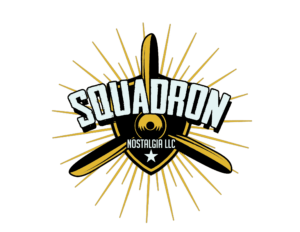
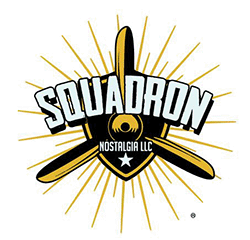
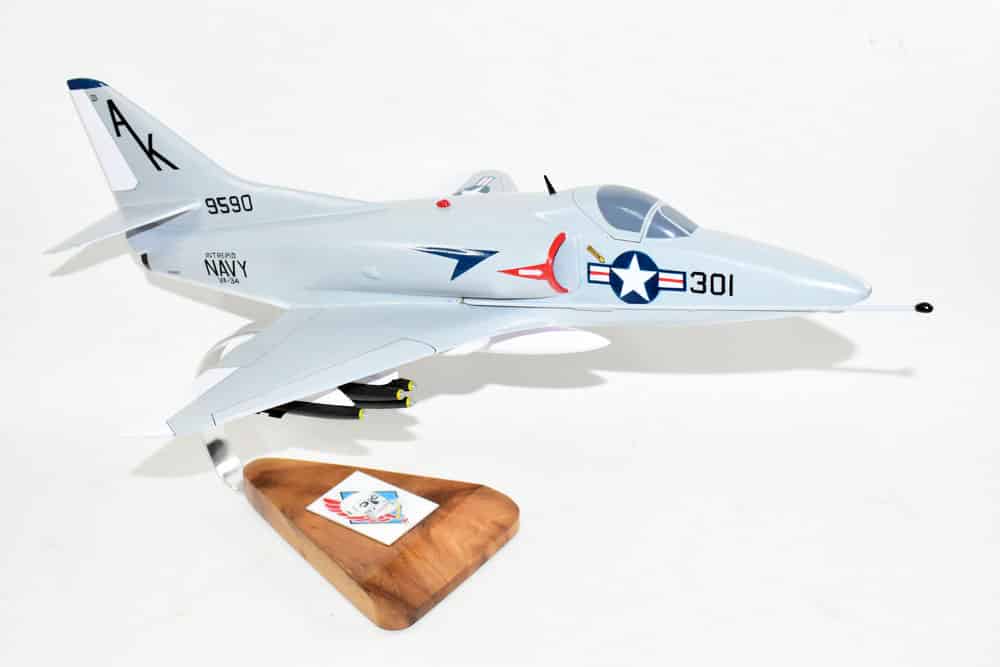

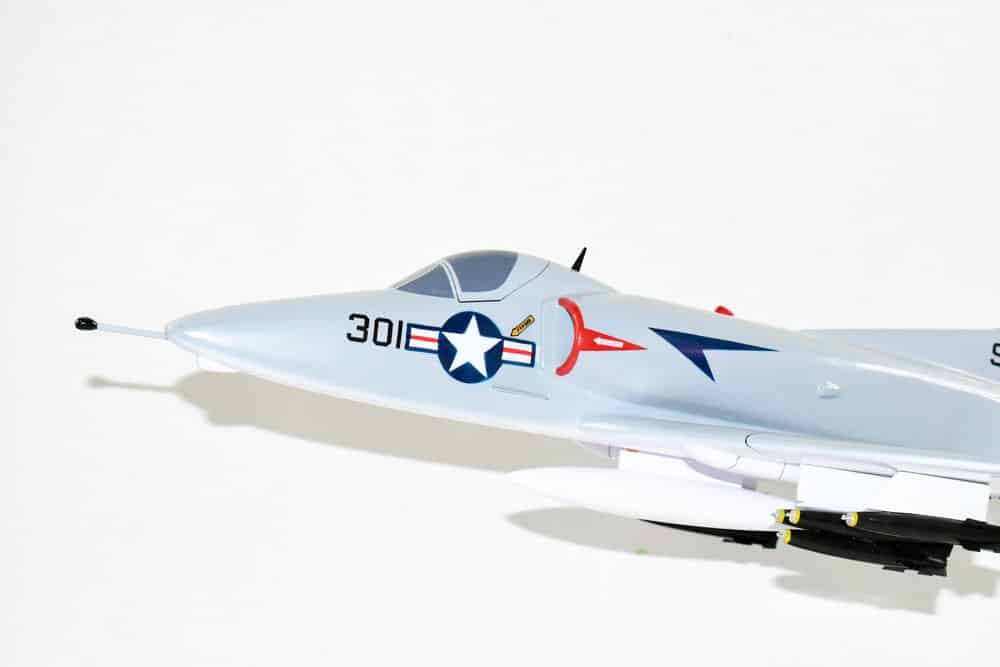
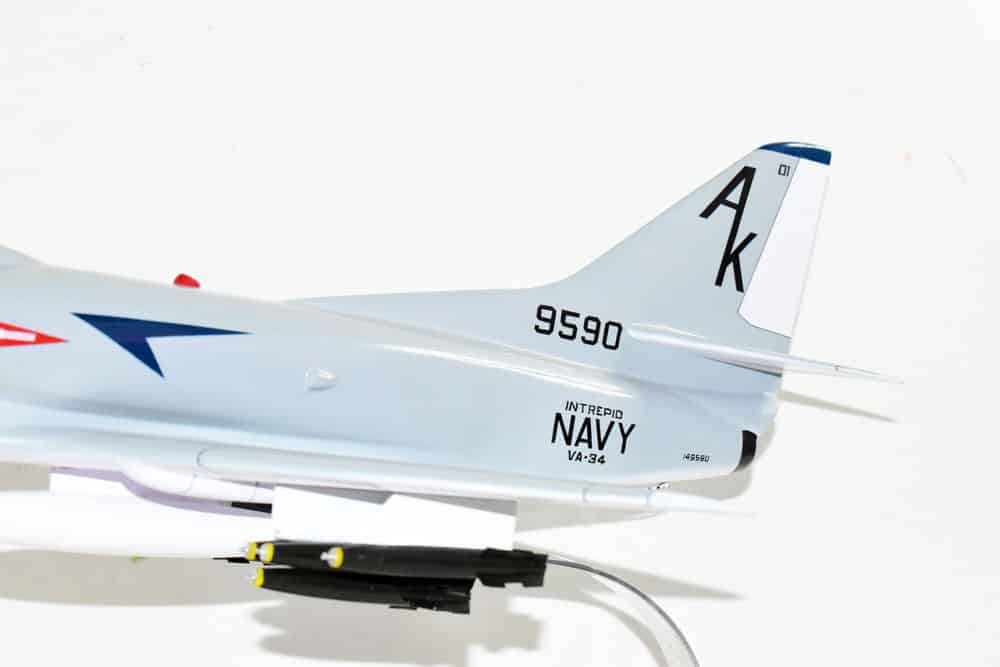
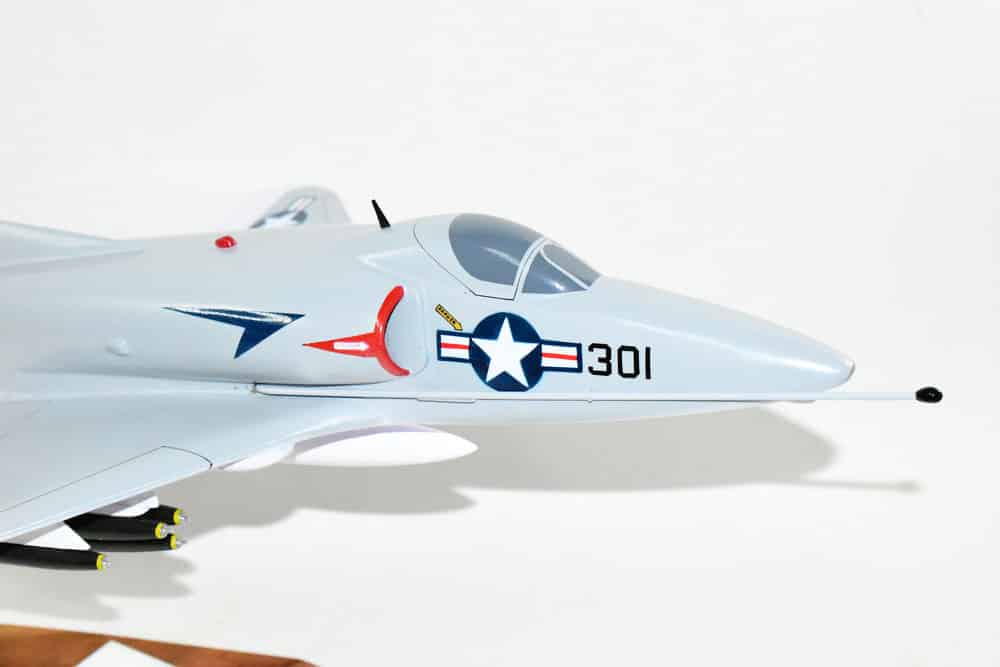
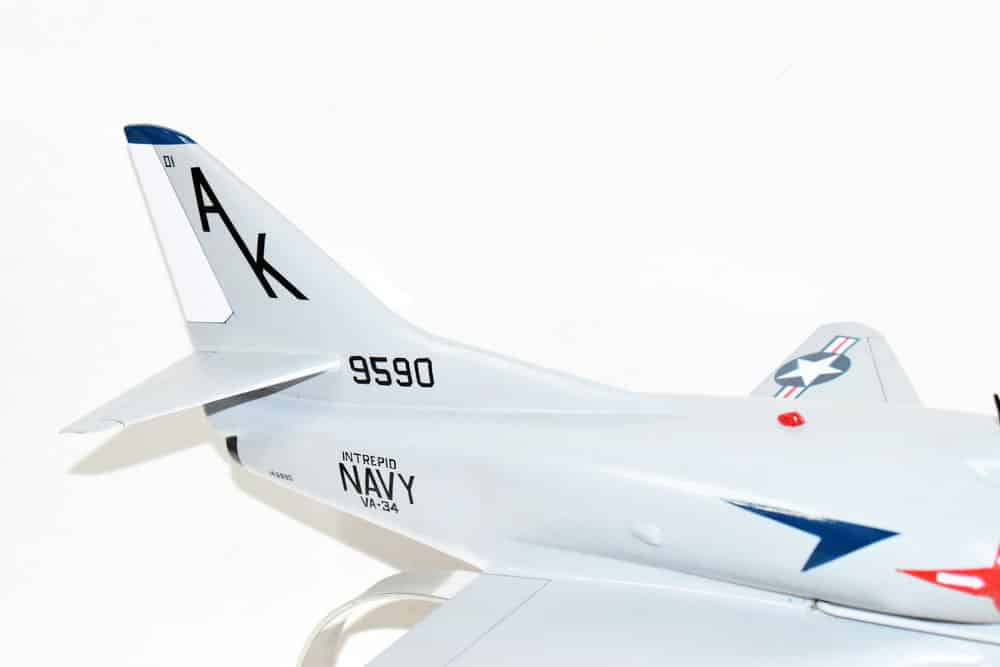
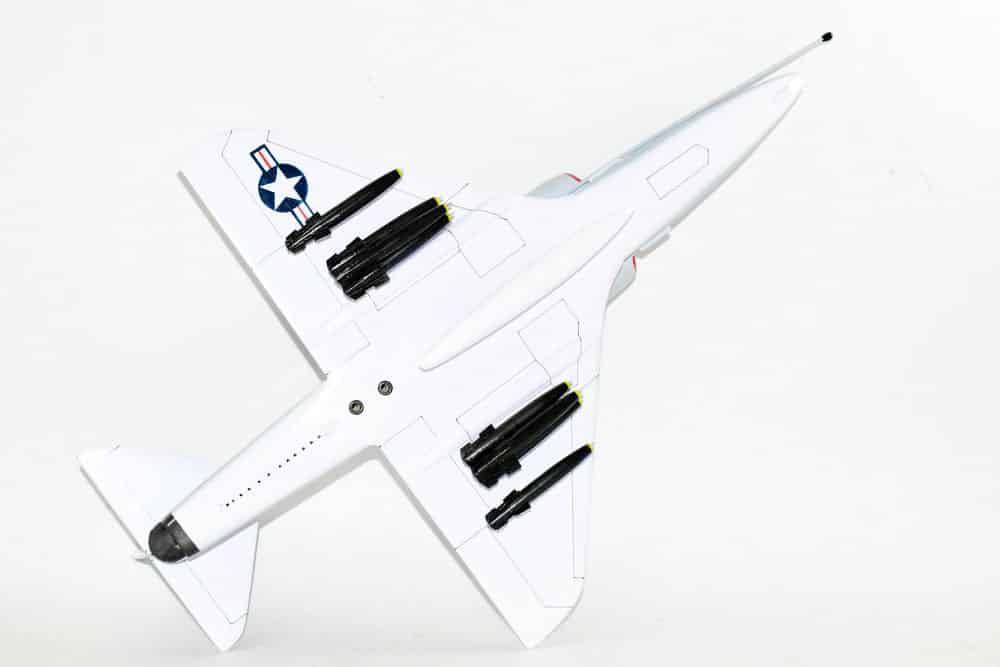
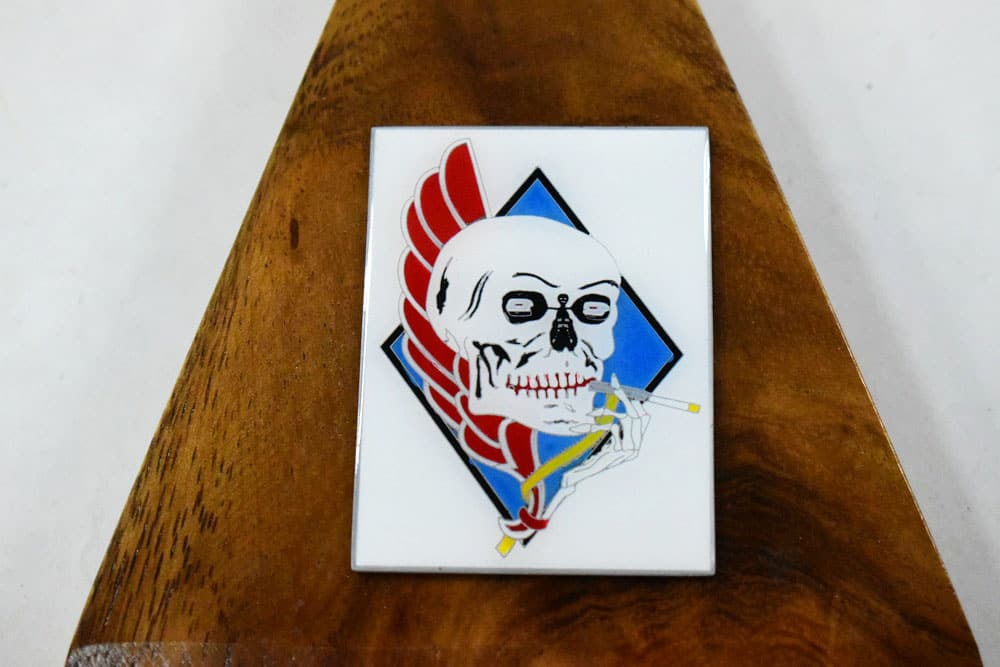
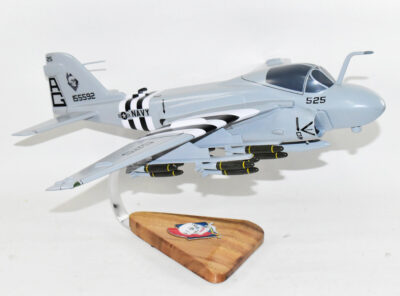
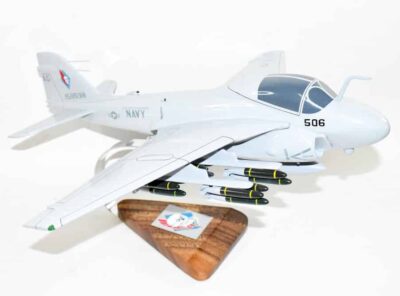
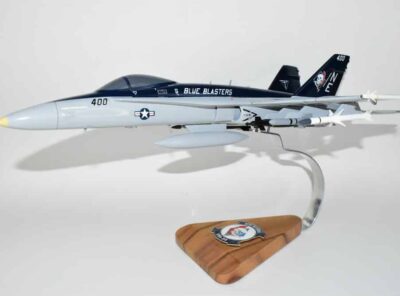
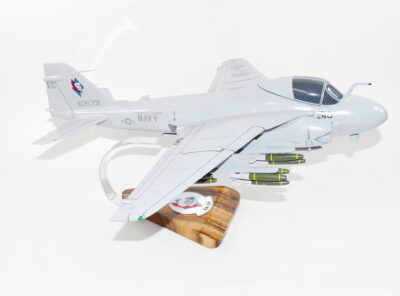
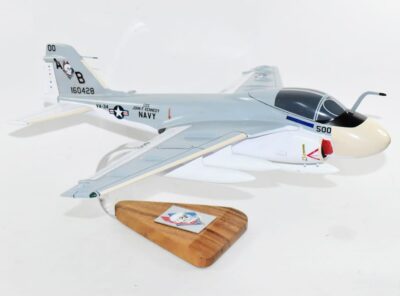
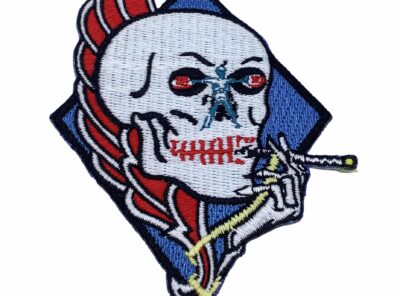
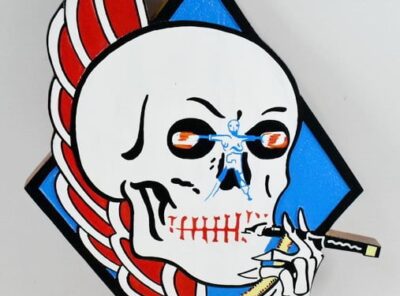
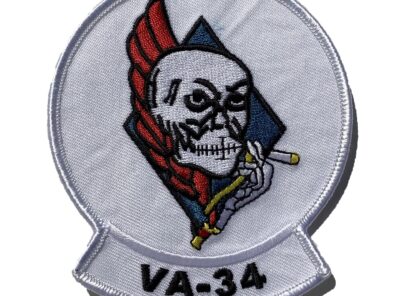
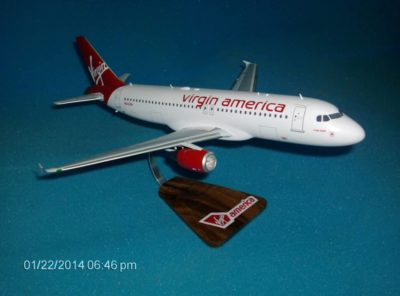
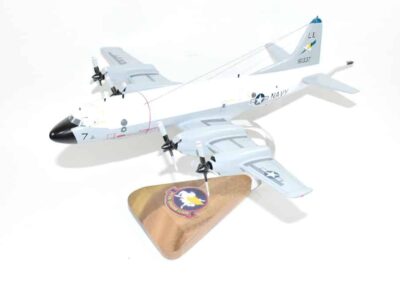
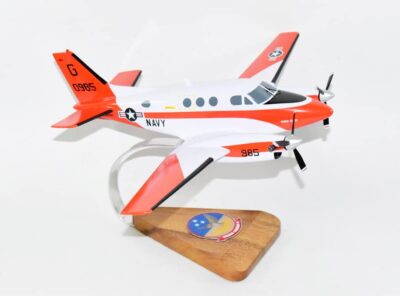
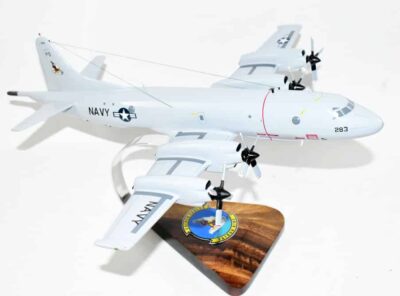
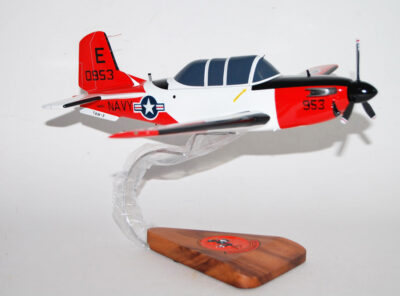
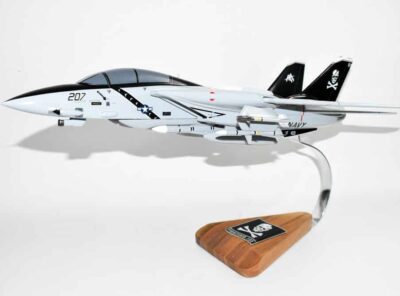
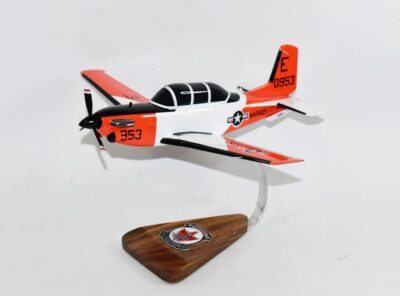

Reviews
There are no reviews yet.